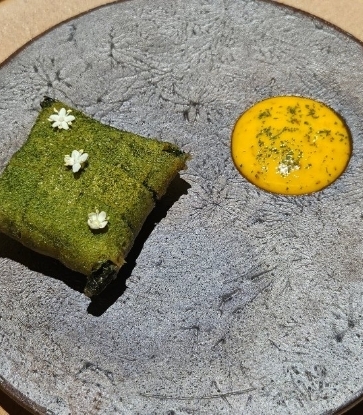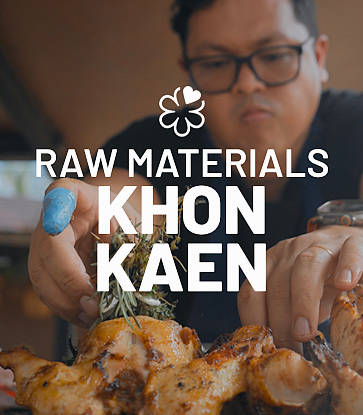For the people of Champagne, it is not uncommon to have a celebratory drink as early as 7am, particularly for those who are champagne makers, whose serious demeanour would appear unfitting to Champagne’s sparkling wine that was specially created as a drink for celebrations and festivities.
However, there are always two sides to every coin. Behind the smiling faces and the unfaltering laughter of the champagne makers, the price that comes with it is the constant 24 hours and 7 days of sweat and labour throughout 365 days of each year. The champagne makers would dedicate their labour and perseverance to seek further knowledge and invent new production technologies to ensure that every stage of the production process strictly follows the regulations of the AOC. (Read Champagne… The Taste of the Stars) This is because their role is to carry on the spirit and lineage of their ancestors’ creations, which has remained the region’s identity for over 250 years before gaining a global recognition as the symbol of celebrations today.
The popularity of champagne that spread across Europe did not happen overnight. After sparkling wine was discovered by the Benedictine monks in the 17th century, champagne became highly favoured amongst the royalty and aristocrats. However, its popularity was not widespread in other cities, but rather, contained within the aristocratic circle as a prominent drink for every celebration. This is because, in the past, the city of Reims in the Champagne region was the place where the coronation ceremony for the King of France was held. Today, Reims remains a site of notable, international champagne houses as well as the prestigious Federation for Champagne.

It is said the Marie Antoinette, the last Queen of France, was as fond of champagne as she loved her lavish lifestyle. However, it was not until a century later that champagne gained popularity across Europe after the development of the Méthode Champenoise – a special production method which required more time, labour and a higher production cost in comparison to other methods of sparkling wine developed to reach a standard quality before being copyrighted to the region of Champagne. Following this, the prominent champagne houses of France competed to become the producer of champagnes for the kings and aristocrats of various regions and countries including Great Britain, Russia, Austria and Prussia in order to be part of this special celebration of success. A very clever marketing strategy indeed, considering that the royal warrants and coat of arms on the champagne label would make a fine advertisement and guarantee that champagne is the drink for the royalty and aristocrats, especially in Great Britain where the taste of champagne is particularly suited to the taste of the English nobilities. Later on, the popularity of champagne began to trickle down to the middle class before spreading out across the globe.
The region of Champagne has been ravaged by war that dates back to 1500 years ago up to the Napoleonic wars, the Franco-Prussian War and World War I. However, it was also war that sparked the drinking culture that spread across the globe by the famous French statesman and warrior, Napoléon Bonaparte. Also known as Napoleon III, the French Emperor who delighted in champagne once famously said: “I drink champagne when I win, to celebrate... and I drink champagne when I lose, to console myself.”
The Tsar and dukes of Russia also favour champagne as much as Napoleon III did, so much so that the royal court of Russia had to order a special production of champagne for him. As for Edward VII, he too was fond of the famous champagne which has been a long-standing drink of James Bond 007. Winston Churchill, the great former Prime Minister of the United Kingdom, was also another avid champagne lover. In the speech given to British soldiers during World War I in 1918, he said: “Remember, gentlemen, it's not just France we are fighting for, it's champagne."

The business of champagne is one that relies on the global market. At the same time, it is influential to a wide range of sectors including social science, economics, politics, art, as well as the world of literature. It has been used to indicate the social status of the characters, such as metaphorically conveying the life of desire in renowned literary works. For instance, Eugene Onegin, written by the eminent Russian writer Alexander Pushkin, has a passage where Pushkin states: “Champagne is like a mistress/ Sparkling, lively, and capricious / Wilful, wild, but empty too…”
In the Great Gatsby, which was published in 1925 by American writer F. Scott Fitzgerald, there were many scenes which mentioned champagne: “In his blue gardens men and girls came and went like moths among the whisperings and the champagne and the stars.” In the 2013 adaptation of the novel by Baz Luhrmann, the image of Leonardo DiCaprio with a coupe champagne glass in hand became remembered as a reflection of the high society of 1920s New York, conveying the lavish and carefree lives of the bright young things busily drinking their nights away. It harks back to the words of F. Scott Fitzgerald, whose writing implies the radical ideology of the hedonists: “Too much of anything is bad, but too much of Champagne is just right.”

In fact, the world of art and the industry of champagne production has long been intertwined for centuries, dating back to the era of La Belle Époque, which began after the end of the Franco-Prussian War in 1871 and lasted until the beginning of World War I in 1914. It was the time period of regional peace in Western Europe, which saw technological developments, economic growth as well as cultural and artistic innovations. The upper class lived a lavish and luxurious lifestyle, especially in Paris, which was considered the centre of prosperity and a thriving art scene.
Many prominent champagne houses would commission artists to create special pieces to be used in advertisements, some of which became masterpieces to both the champagne producers and the artists themselves. Amongst these, the artists with notable pieces include Pierre Bonnard, Walter Crane, Alfons Mucha and Henri Toulouse-Lautrec.
One of the masterpieces in which the world of art and champagne met was produced in 1902, a time period when Art Nouveau was at its peak. Combining natural patterns from floral and fauna, insects, vines and shells to create ornate curves to decorate the interior and exterior, as well as furniture, décor and accessories, Perrier-Jouët is one of the world’s oldest champagne houses situated in Épernay. Perrier-Jouët commissioned Emile Gallé, a leading French art nouveau artist and master glassmaker, to design the iconic Japanese anemone wreathed in gold for the Perrier-Jouët Belle Époque vintage, turning it into an iconic commercial work of art. Not only does the Art Nouveau movement reflect Perrier-Jouët’s philosophy of infusing the poetic beauty of nature into daily life, the white floral design is also symbolic of the unique aroma found in every Perrier-Jouët champagne.
Since then, Perrier-Jouët has continued to celebrate the marriage of the arts and champagne, calling on renowned artists such as Daniel Arsham, kloi DL, Makoto Azuma and Tord Boontje to create unique works of art under the theme of champagne tasting. The beautiful art installations designed for champagne lovers to enjoy tasting different champagnes while observing art marks the close relationship between the House of Perrier-Jouët and Art Nouveau that reflects a life of poetic bliss.
The next chapter will explore the different variety of champagnes and the joy of revelling in the floral aroma of champagne.
This article is brought to you by Perrier-Jouët.
To know more about Perrier-Jouët, please visit https://www.perrier-jouet.com/.






















